 |
Click here for the GIA Report
Original GIA Report ships with item. We also include our comprehensive appraisal for identification or insurance purposes. |
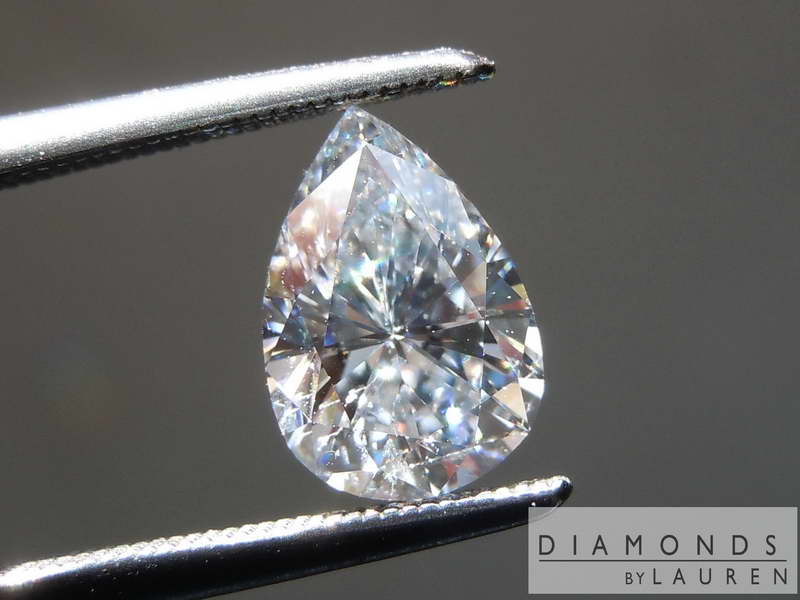
1.28ct D SI2 Pear Brilliant Diamond
Here is a very cool stone we took in from a consumer. The stone did not have a GIA report, however, I had no doubt that I wanted us to offer the stone. So we purchased and submitted it to GIA.
The first thing you notice is the color. It's a "Super D" The stone is utterly colorless- bright white. If there was a "C" color - this would be it! I love the cut as well. The stone is ever so slightly chubby. In a nice way. The light performance includes some very bright reflections- lively. Larger in the center, with smaller reflections at the pointy, and rounded ends.
I anticipated the SI2 clarity. I'll admit I was surprised by the laser drill comment on the GIA report. Looking at it now, I can spot a microscopic laser drill hole on the bottom of the stone. It does not bother me at all. The stone will look amazing once we set her.
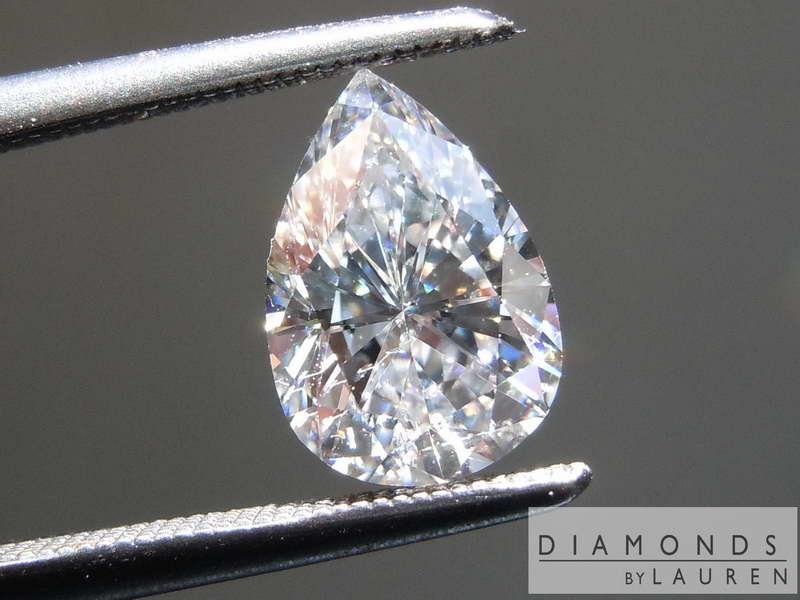
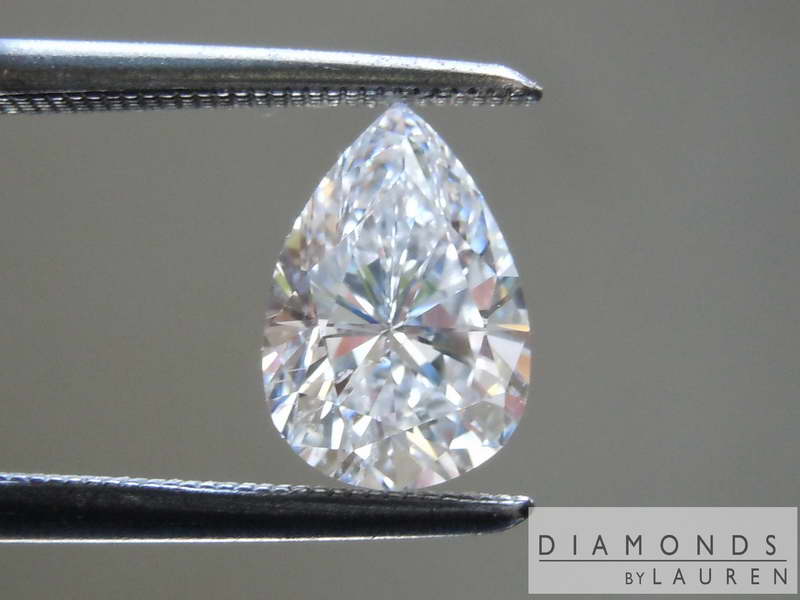


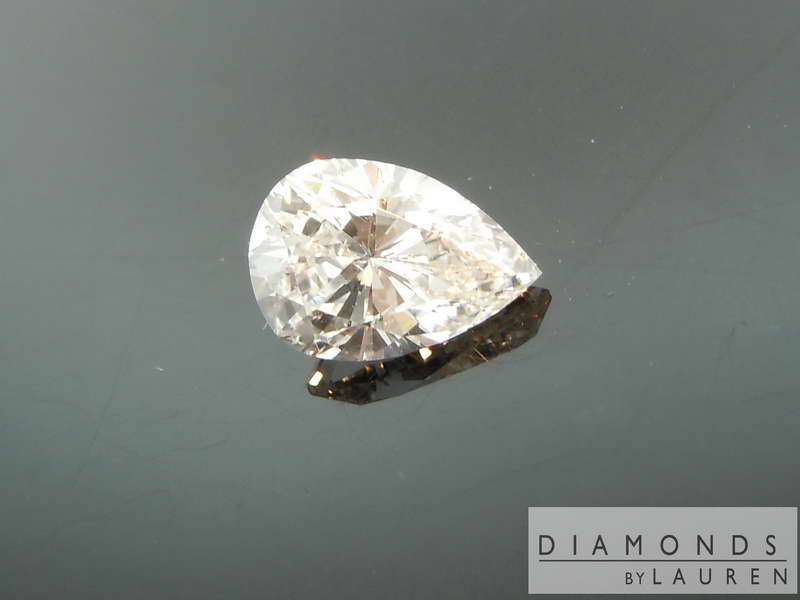
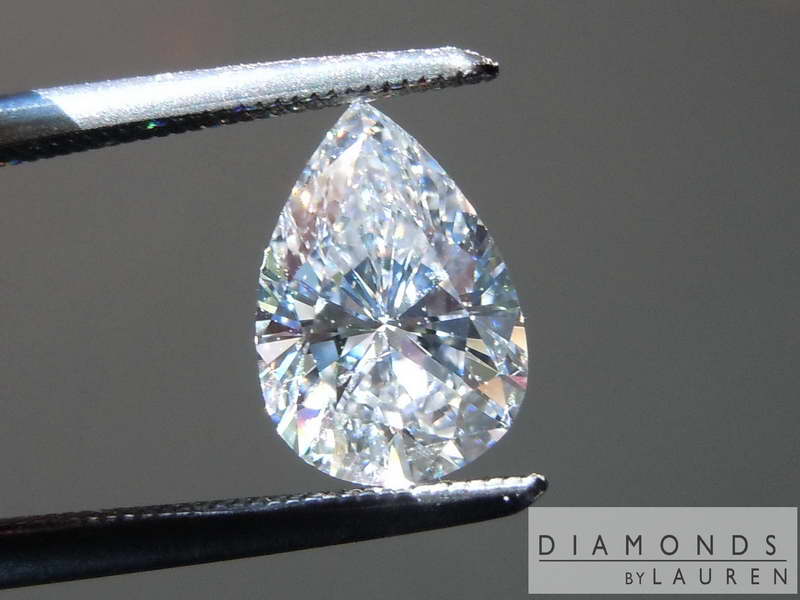
If you are interested in this stone, give us a call. You will be purchasing with a money back guarantee, so you are sure to end up satisfied!
Laser Drilling
Laser drilling - what is it?
There are a number of methods of minimizing natural inclusions in diamonds. The two primary methods are "Fracture filling", and "Laser Drilling". The first method I will describe is more intrusive and far less desirable than the second.
Fracture Filling: GIA will not issue a clarity grade a stone that is fracture filled, which is also known as "Yehuda process". The reason it is considered worse is that it involves injecting plastic in a fissure in a diamond. It is similar to a process used on car windshields- where they repair a crack. In diamonds, the process results in a slightly hazy appearance, and sometimes a rainbow effect can be seen.
Another problem with it is that it's not necessarily permanent. For example, if the stone is heated as is common during jewelry manufacture or repair, the plastic can melt causing the stone to return to it's former condition. Bring your eye clean diamond in a ring to be sized, and get back a stone with a horrible feather imperfection - bummer, right?
Laser Drilling: Laser drilling is a process used on diamonds that may have an obvious black carbon spot. A laser is used to drill a channel to the carbon, then the diamond is boiled in sulfuric acid which bleaches the black spot into a white one. GIA will grade such diamonds, and indicate the drill on the report. The process is permanent.
Another positive aspect to this process is that it is fairly easy to spot, sometimes with a loupe, sometimes naked eye. This is a good thing compared to Yehuda filling which can sometimes be difficult to spot. The idea is that honest people in the trade do not support selling of treated stones going undisclosed.
We never carry fracture filled diamonds, and I can only recall two other laser drilled diamond we have stocked. This is a stone which whose value and appearance is so incredible we decided to offer it.
If you are interested in this stone, give us a call. You will be purchasing with a money back guarantee, so you are sure to end up satisfied!
The photos above are ACTUAL Photos of the diamond you will receive.
GIA REPORT

CUSTOM MADE RINGS AVAILABLE
This Diamond is offered loose, but we would be delighted to help you design and manufacture a fabulous setting for it.
You can also pick from any of the rings on the site- we will replicate the setting for the stone you purchase
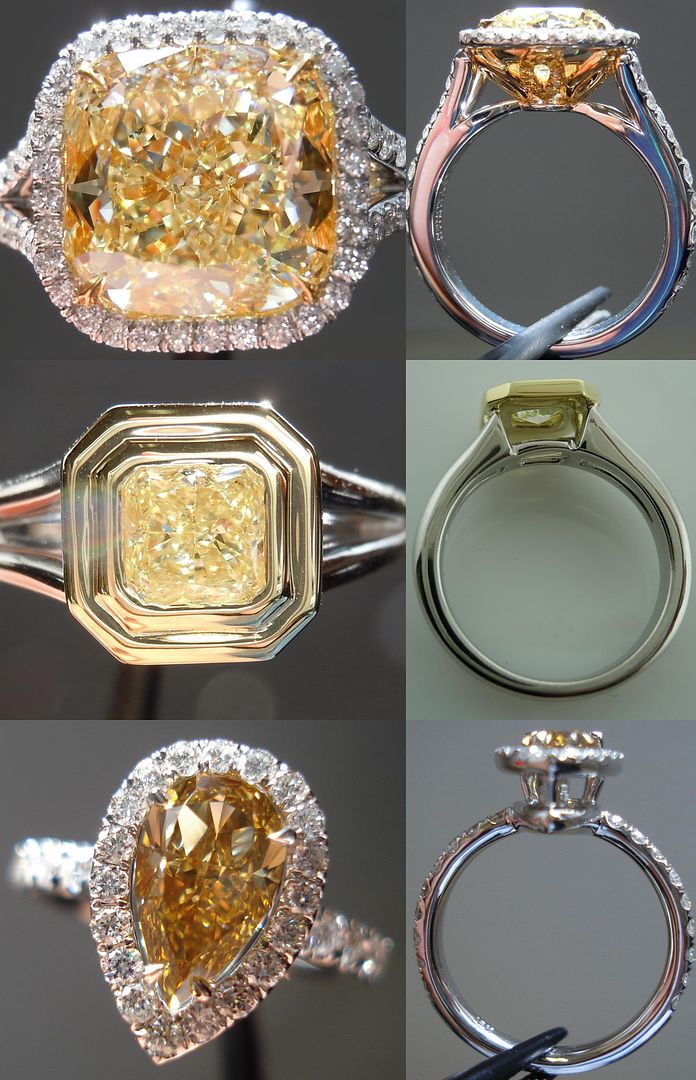
Or, if you want a three stone ring, you will approve the design, and side stone selection.
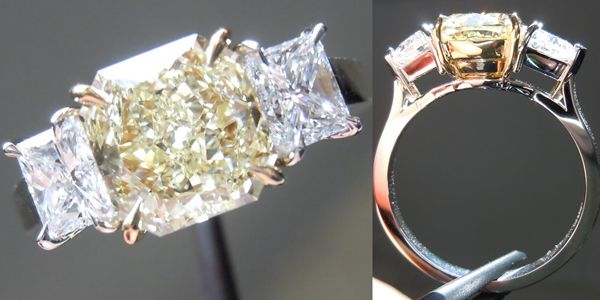
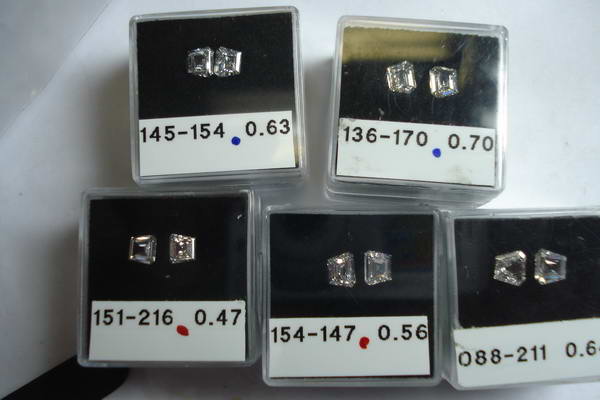
When we need to find side stones, we have an extensive selection to choose from.
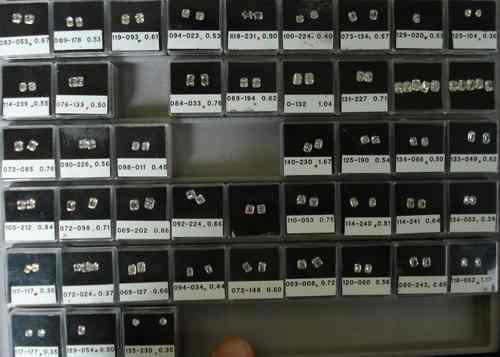
Guides Related to Diamonds
Fancy Colored Diamond Buying Guide
How much will my new diamond appraise for?
Why insist on a GIA Report?
Natural Pink Diamond Color Chart
Our Fancy Yellow Color Chart
|